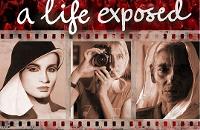Activity 1: About Robyn Beeche
Embracing India through innovative photography
Sydney-born Robyn Beeche became renowned in London when she created iconic images of the 1980s. At a time when the fashion and art worlds were rich with experimentation, she collaborated closely with counterculture personalities such as designers Zandra Rhodes and Vivienne Westwood, punk impresario Malcolm McLaren and performance artists Divine and Leigh Bowery.
Using the human body as a blank canvas on which to splash images, Beeche used tricks of make-up, lighting and composition to present trompe l’oeil techniques to great effect, long before Photoshop existed. These trademark shots featured in international publications, setting the style zeitgeist for a generation and inspiring video clips and album covers for pop luminaries David Bowie and Visage.
At the peak of her career in the mid-1980s, Beeche began visiting India, 'drawn like a magnet' to photographing Holi, the dramatic colour-throwing festival. She gave up her high-flying London career to move permanently to the Indian pilgrimage town of Vrindavan. She embraced Hinduism and immersed herself in the area's vibrant traditions, playing a vital role in documenting them before they change beyond recognition due to the country's rapid modernisation. She does this photographic documentation as spiritual seva (service) and donates her images to her ashram's archive so that scholars may access them in perpetuity.
Beeche is one of the few foreigners allowed into temples to take photographs and her images have been published in a number of books. She helps run an NGO (Non–Government Organisation), Friends of Vrindavan, which conserves the local environment and heritage.
Beeche's work is currently experiencing a resurgence of interest in Australia, as a recent number of exhibitions and a hard-cover book on her work demonstrates.
Film information
A Life Exposed: Robyn Beeche (2013) is a documentary produced and directed by Lesley Branagan. She is a social researcher and documentary-maker with a focus on Indian culture.
Weaving between Australia, London and India, A life exposed: Robyn Beeche uses observational footage, interviews, stills and unique archival footage of Beeche's 1980s London studio shoots, as well as her photographs of India.
Exploring themes of transformation, spectacle, ritual and tradition, the film takes viewers into the energetic world behind Beeche's process of constructing images, and examines the new meaning she found for photography in India. We see Beeche at work in India and hear her speaking about why she works as she does.
A life exposed documentary

You can download the 30–minute version of the documentary that links to Enhance TV. Viewers will need to have Enhance TV's Premium membership and must be employed by an Australian educational institution. A 52–minute version of the film is also available to order on DVD.